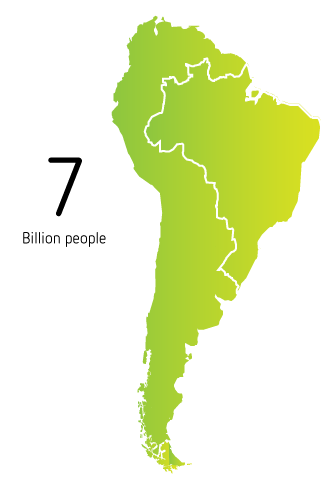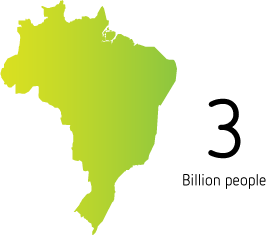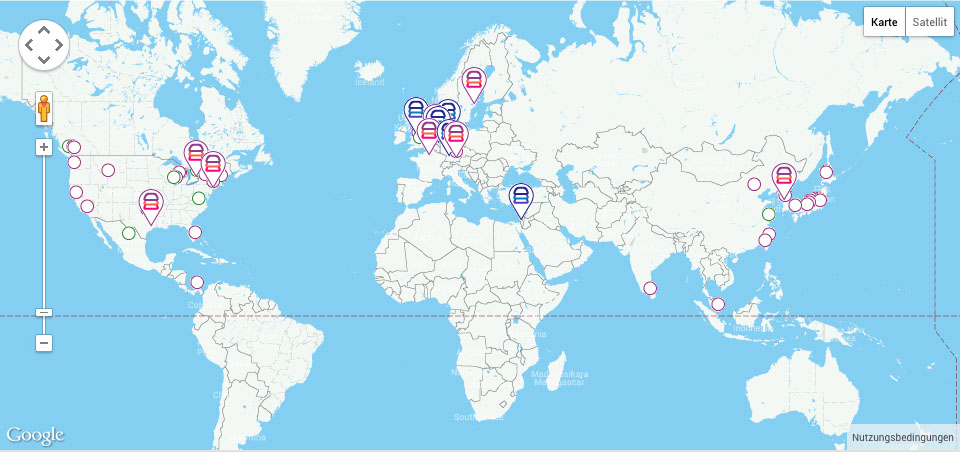What is Vertical Farming?
please scroll down...
In a world where 870 million people go to bed hungry every night (UN, 2012), 1.4 billion people are overweight (WHO, 2008), arable land, fresh water and fertilizers are scarce it is clear that innovative solutions are needed.
Four global challenges we need to solve:
#1 Pesticide use
leading to:
Agricultural runoff
Ocean Acidification
#2 Fresh water use
80 % of all freshwater
is used in agriculture
#3 Food transport
leads to:
Significant food waste
Greenhouse gas emisions
#4 Rapid urbanization
Expected 10 billion people globally by 2050
80% urban population by 2050
Increasing demand for food in cities
Our present agricultural footprint is the size of South America

To feed the coming 3 billion people we would need an additional landmass the size of Brazil

+
Introducing:
Vertical Farming
10 Advantages of Vertical Farming:
- Limited Agricultural Runoff
- Year round crop production
- Resilient to climate change
- Uses up to 98 % less water
compared to open field agriculture
- Less food miles due to local production
- Creates new green jobs
- Promotes restoration of damaged ecosystems
- Ideal for vacant urban spaces
- Higher yields and faster growth rates
- Delivers consistent, fresh and local produce
Non-profit platform for:
businesses, institutions and individuals
Mission:
to facilitate the global implementation of vertical farming systems to ensure food security, food safety, green jobs, environmental protection and climate change resilience.
=

We encourage transparency and collaboration by mapping and promoting businesses, institutes and projects focused on vertical and urban farming.
We help standardize vertical and urban farming through our integration typology and glossary.
Help keep our life support systems green & blue

We educate through workshops and events
<< back